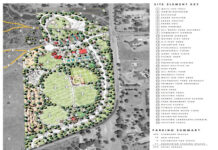The March 12 meeting of the San Diego County Board of Supervisors included a direction to the county’s Chief Administrative Officer to enhance fire safety in the county.
The supervisors’ 5-0 vote directed the Chief Administrative Officer to work with the San Diego County Regional Fire Authority, the Sheriff’s Department, other county departments, and outside agencies to develop a plan to enhance protection against wildfires in existing and future communities and to return to the board within 90 days with recommendations. The focus will be on five objectives: developing and implementing a more cohesive pre-fire strategy including expansion and increased support to fire safe councils, enhancing pre-fire vegetation management including the expansion of community chipping programs and working with agencies at all levels of government to develop a cooperative vegetation management plan including potential legislative changes to reduce or eliminate burdensome regulations for controlled burns and fire breaks, improving pre-fire emergency planning including enhancing existing technology and geographic information system mapping for better protection of at-risk communities, strengthening fire safety measures in new construction including stricter building requirements in the fire code for buildings in high-risk areas, and reducing wildfire loss in existing structures including increased frequency of defensible space inspections and the development of a grant program to encourage fire-resistant building improvements.
“I applaud the program,” said Supervisor Jim Desmond. “We can make our communities safer.”
The county has 37 fire safe councils which provide education and assistance programs. The county also has approximately 60,000 homes on land considered to be at high risk for a wildfire. Building codes and fire codes can require that new homes in high-risk areas have safer walls, vents, and other fire-resistant materials, and improvements can also be made to existing homes especially if grants or other incentives allow the homeowner to afford such increased fire resistance.
A cooperative vegetation management plan would require the county to work with state and Federal agencies and possibly with other local agencies.
“There has to be a marriage between the fire service and the fire ecology,” said Supervisor Dianne Jacob. “It has to be done right, and if it’s done right it’s very effective.”
The vegetation management proposals also include shortening the defensible space inspection cycle from every five years to every three years. The expansion of wood chipping programs will reduce fuel for a potential wildfire.
The technology improvements could include new GIS mapping, fire station electronic wall map displays, evacuation process training, and enhancements to the San Diego County Regional Fire Authority pre-fire website.
“I look forward to seeing this action come back to the board in June with recommendations,” Jacob said.













